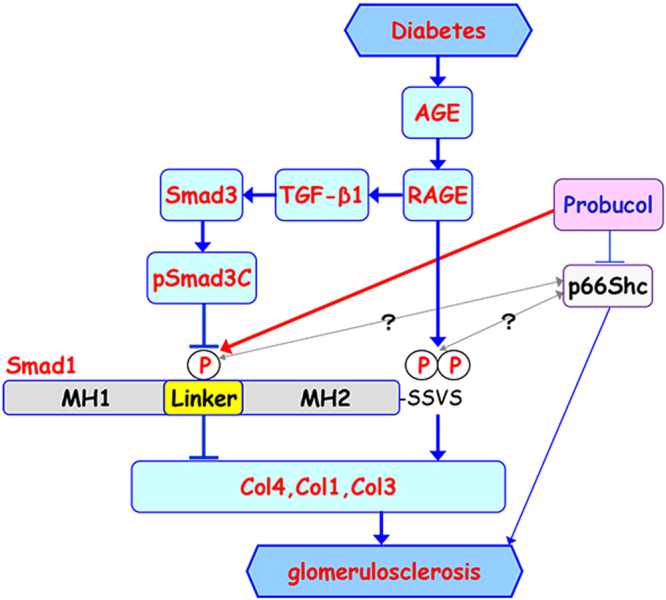Figure 9.

Proposed model for interplay between Smad1 and Smad3 in DN. In diabetes, phosphorylation of Smad1 at the SSVS motif in the C-terminal domain (pSmad1C) activated by AGE-RAGE axis induces excessive synthesis of ECM proteins (Col1, Col3, and Col4), leading to the development of glomerulosclerosis. In addition, TGF-β1 signaling pathway is also activated by AGE-RAGE axis and phosphorylates Smad3 (pSmad3C), which inhibits the phosphorylation of the Smad1 linker domain (pSmad1L). pSmad1L inhibits expression of Col1, Col3, and Col4, and thereby attenuates progression of glomerulosclerosis. Probucol may be involved in the activation of pSmad1L. Moreover, a recent report suggested that probucol ameliorates diabetes-induced glomerulosclerosis by inhibiting p66Shc expression, but the relationship between p66Shc and Smad1 is unknown. MH1 and MH2 stand for the N-terminal and C-terminal domains separated by a linker domain of Smad1, respectively.
